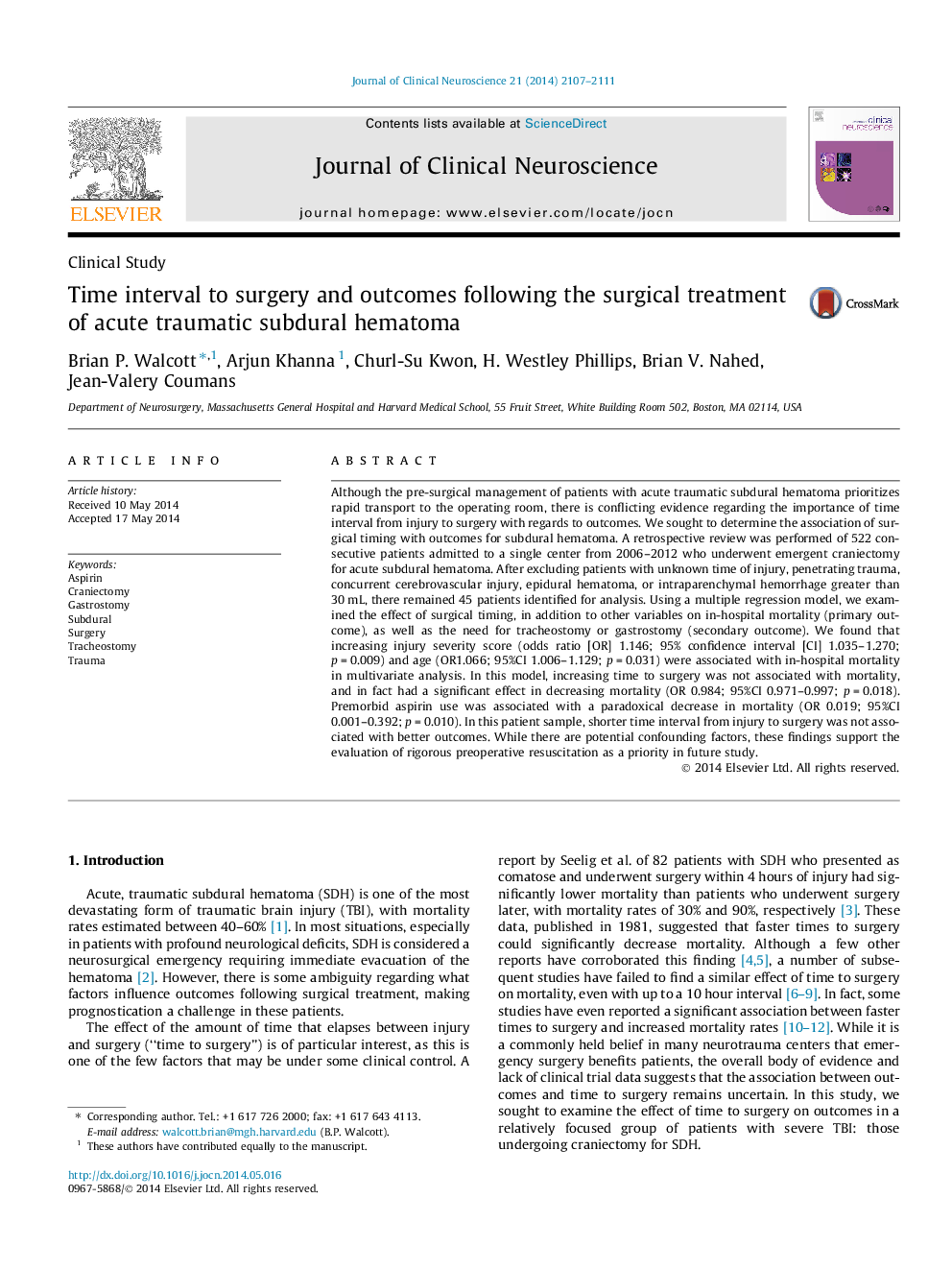| Article ID | Journal | Published Year | Pages | File Type |
|---|---|---|---|---|
| 3058583 | Journal of Clinical Neuroscience | 2014 | 5 Pages |
Although the pre-surgical management of patients with acute traumatic subdural hematoma prioritizes rapid transport to the operating room, there is conflicting evidence regarding the importance of time interval from injury to surgery with regards to outcomes. We sought to determine the association of surgical timing with outcomes for subdural hematoma. A retrospective review was performed of 522 consecutive patients admitted to a single center from 2006–2012 who underwent emergent craniectomy for acute subdural hematoma. After excluding patients with unknown time of injury, penetrating trauma, concurrent cerebrovascular injury, epidural hematoma, or intraparenchymal hemorrhage greater than 30 mL, there remained 45 patients identified for analysis. Using a multiple regression model, we examined the effect of surgical timing, in addition to other variables on in-hospital mortality (primary outcome), as well as the need for tracheostomy or gastrostomy (secondary outcome). We found that increasing injury severity score (odds ratio [OR] 1.146; 95% confidence interval [CI] 1.035–1.270; p = 0.009) and age (OR1.066; 95%CI 1.006–1.129; p = 0.031) were associated with in-hospital mortality in multivariate analysis. In this model, increasing time to surgery was not associated with mortality, and in fact had a significant effect in decreasing mortality (OR 0.984; 95%CI 0.971–0.997; p = 0.018). Premorbid aspirin use was associated with a paradoxical decrease in mortality (OR 0.019; 95%CI 0.001–0.392; p = 0.010). In this patient sample, shorter time interval from injury to surgery was not associated with better outcomes. While there are potential confounding factors, these findings support the evaluation of rigorous preoperative resuscitation as a priority in future study.
